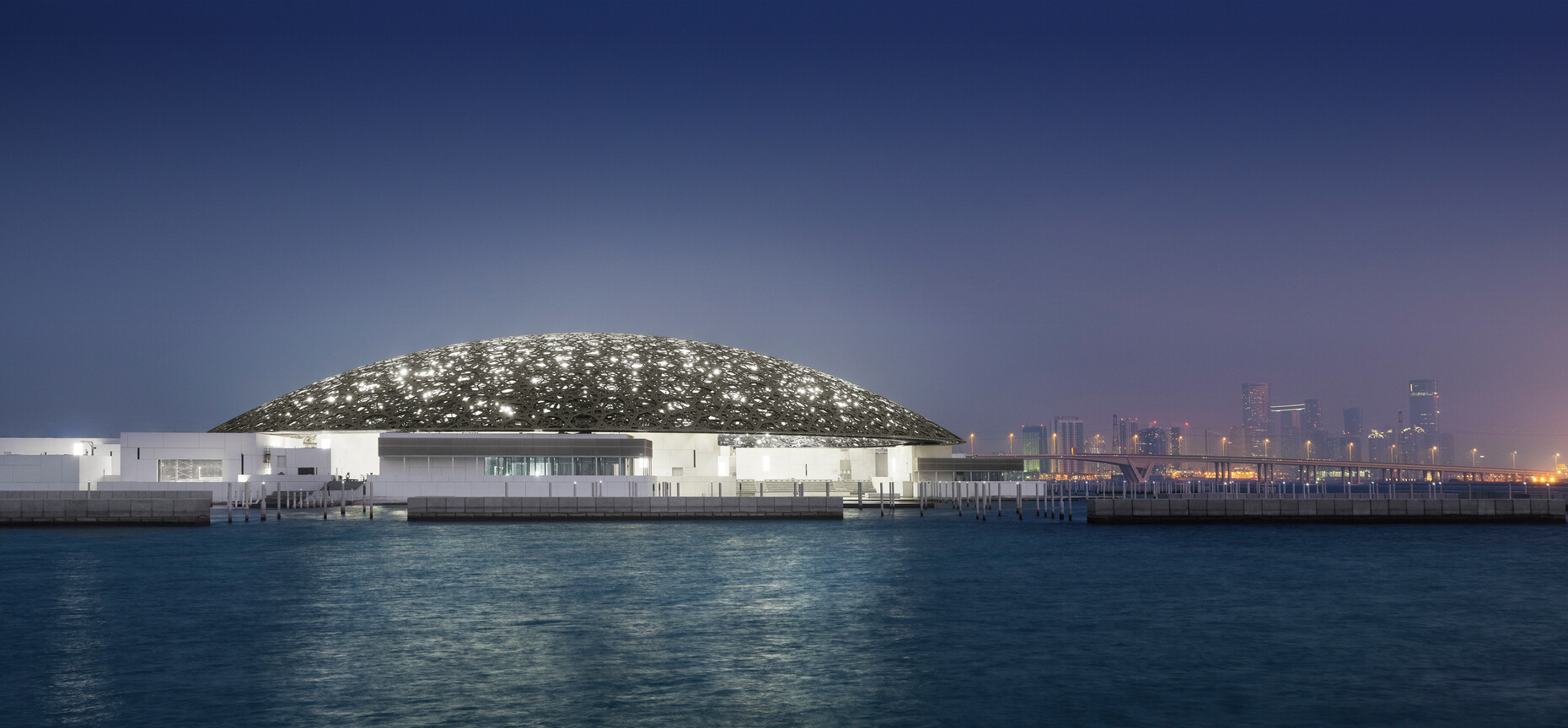Under the Floating Dome of the Louvre
“Design is our core competenence,” says Carlotta de Bevilacqua, Vice President und CEO of the Artemide Group. And she herself makes a fundamental contribution to that expertise. After all she not only heads the company but has also designed various products for Artemide. Take the projector family “Cata”, which is employed among other places in one of the most spectacular museum buildings of the new millenium, the Louvre Abu Dhabi dreamed up by Jean Nouvel. For light planners Nouvel’s museum presented a real challenge: The French architect realized the Louvre offshoot as a kind of an old Arab city spanned by an enormous dome measuring 180 meters in diameter. The latter has thousands of irregular starry openings that allow dappled daylight to enter the building. Nouvel sought to create constantly changing light in the museum interior. As such, finding suitable lighting for the exhibits, lighting that should of course remain constant is an extremely exacting task.
As an open, modular system “Cata” provided the ideal response to this challenge. For the project, Artemide developed a special regulating system for the Cata TIR (Total Internal Reflection) optical unit: “We had to create a solution capable of adjusting to the variable light to shadow ratio, which depending on the proportion of daylight produces an exactly defined flow of light on the exhibits and can be inconspicuously integrated into the ceiling structure of the exhibition rooms,” explains Carlotta de Bevilacqua. Every individual projector with the optical unit Cata TIR adjusts to the current light situation recorded by the sensors and repeatedly regulates anew the color, flow of light and rendering of color. This not only enables the highest possible flexibility regarding emission properties but also precision and control over the performance.
Since “Cata” is an open platform it is capable of illuminating exhibition items of widely varying sizes and materials. Every projector consists of a silicon lens as a so-called primary unit. The latter’s beam width can be expanded by using holographic filters as dockable secondary units. “It might look like a very simple idea but developing a product with such diverse uses is by no means easy,” says Carlotta de Bevilacqua by way of emphasizing the research work involved in producing “Cata TIR”. In visual terms by contrast the delicate and partly transparent projector is very low key and makes the light the main protagonist. This is also the case in Louvre Abu Dhabi, where the projectors fit quite naturally into the ceiling construction so that visitors’ attention can focus entirely on the works of art and architecture. (fap)
















